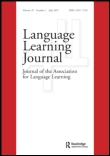
Language Learning Journal
Scope & Guideline
Advancing the discourse in language acquisition.
Introduction
Aims and Scopes
- Language Acquisition Processes:
Research exploring how learners acquire second languages, including cognitive, emotional, and social factors that influence language learning outcomes. - Language Pedagogy and Teaching Practices:
Studies examining innovative teaching methodologies, assessment techniques, and curriculum development aimed at enhancing language education in various contexts. - Multilingualism and Identity:
Investigations into how multilingual identities are formed, negotiated, and maintained within educational settings, focusing on the implications for teaching and learning. - Technology in Language Learning:
Exploration of the role of digital tools and online learning environments in facilitating language acquisition, including the impact of educational technologies on learner engagement. - Cultural and Contextual Influences:
Research on how cultural backgrounds and contextual factors shape language learning experiences and outcomes, emphasizing the importance of context in language education.
Trending and Emerging
- Emotional and Psychological Aspects of Learning:
Increasing research on the emotional experiences of learners, including anxiety, motivation, and identity, highlights the importance of addressing psychological factors in language education. - Digital and Online Learning Environments:
The rise of online learning due to the COVID-19 pandemic has led to a significant focus on digital tools and their effectiveness in language learning, marking a shift towards more technology-driven pedagogies. - Intercultural Communication and Exchange:
Studies exploring intercultural competence and the role of virtual exchanges in language learning are gaining prominence, reflecting the globalized nature of language education today. - Task-Based Language Teaching (TBLT):
There is growing interest in task-based approaches to language teaching, with research investigating how collaborative and communicative tasks can enhance language skills and learner engagement. - Multilingual Education and Policy:
Research on multilingual education policies and practices is emerging, particularly concerning how educational systems can support multilingual learners and their identities.
Declining or Waning
- Traditional Grammar Instruction:
There has been a noticeable decrease in studies solely focused on traditional grammar instruction methods, as the field increasingly values communicative and context-based approaches to language teaching. - Language Learning Strategies:
Research specifically targeting individual language learning strategies appears to be waning, possibly due to a broader focus on holistic educational practices rather than isolated strategies. - Standardized Testing and Assessment:
The emphasis on standardized assessment methods in language learning seems to have diminished, as more studies are exploring formative assessment and alternative evaluation methods that align with communicative language teaching.
Similar Journals

Argentinian Journal of Applied Linguistics
Connecting theory to practice in the realm of applied linguistics.The Argentinian Journal of Applied Linguistics is a prominent publication dedicated to advancing the field of linguistics with a particular focus on practical applications within various contexts. Published by the Federación Argentina de Asociaciones Profesionales de Profesores de Inglés (FAAP), this journal serves as a vital platform for researchers, educators, and linguistics professionals interested in the nuances of language teaching, acquisition, and sociolinguistics. With an ISSN of 2314-3576, the journal showcases original research and reviews that push the boundaries of current knowledge and practice in applied linguistics. Despite being in its early stages, the journal aims to build a strong academic presence by fostering collaboration among scholars and practitioners, thereby contributing to the enhancement of language education in Argentina and beyond. The importance of this journal lies not only in its commitment to accessibility and knowledge dissemination but also in its role as a bridge between linguistic theory and practical application, ultimately benefiting educators and learners alike.
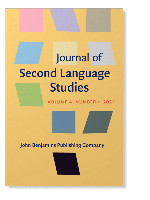
Journal of Second Language Studies
Exploring the Frontiers of Second Language AcquisitionWelcome to the Journal of Second Language Studies, a premier publication dedicated to advancing the field of language acquisition and pedagogy. Published by John Benjamins Publishing Co in the Netherlands, this journal (ISSN: 2542-3835, E-ISSN: 2542-3843) holds a significant place within the academic community, reflected by its Q2 ranking in Education and Q1 in Linguistics and Language for 2023. With a strong Scopus presence, ranking 197/1088 in Language and Linguistics, it appeals to a broad audience of researchers, educators, and students interested in the complexities of second language learning. The journal has been publishing groundbreaking research from 2018 to 2024, focusing on innovative methodologies, theoretical frameworks, and practical applications that enhance second language education. Although currently not open access, this journal serves as an essential resource for those seeking to deepen their understanding of language dynamics and teaching strategies in a diverse educational landscape.

Revista Espanola de Linguistica Aplicada
Innovating the field of applied linguistics through rigorous research.Revista Espanola de Linguistica Aplicada is a prominent academic journal published by John Benjamins Publishing Co, specializing in the interdisciplinary fields of linguistics, education, and e-learning. With its ISSN 0213-2028 and E-ISSN 2254-6774, the journal has established a significant presence in Spain and beyond, showcasing innovative research and contributions in applied linguistics. The journal is recognized for its rigorous peer-review process and maintains impressive Scopus rankings, notably within the 72nd percentile for Arts and Humanities and 68th percentile for Social Sciences, reflecting its critical role in advancing the study of language and education. As of 2023, it holds a Q3 rank in Education and a Q2 rank in Linguistics and Language, underscoring its influence and relevance in these disciplines. Targeted at researchers, educators, and students alike, the journal aims to facilitate knowledge exchange and provide a platform for discussions that shape the future of linguistics.
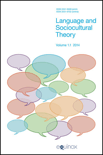
Language and Sociocultural Theory
Exploring the Interplay of Language and CultureLanguage and Sociocultural Theory, published by EQUINOX PUBLISHING LTD, stands as a vital resource for scholars in the domains of linguistic studies and cultural theory. With its ISSN 2051-9699 and E-ISSN 2051-9702, this UK-based journal has consistently achieved Q1 rankings in both Cultural Studies and Linguistics and Language as of 2023, demonstrating its significant impact within the academic community. The journal's position is further affirmed by its rankings in Scopus, where it occupies the 80th percentile in Cultural Studies and the 72nd percentile in Linguistics and Language, making it a leading platform for cutting-edge research. Though not an Open Access journal, it provides critical insights into the interconnectedness of language and sociocultural dynamics, making it essential reading for researchers, professionals, and students eager to explore the complexities of human communication. Spanning converged years from 2014 to 2023, the journal presents a rich collection of scholarly articles that strive to advance the field and inspire further academic inquiry.
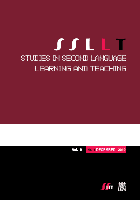
Studies in Second Language Learning and Teaching
Empowering educators through cutting-edge research.Studies in Second Language Learning and Teaching is a premier open-access journal dedicated to advancing research and scholarship in the fields of education, linguistics, and language acquisition. Published by ADAM MICKIEWICZ UNIVERSITY, KALISZ, this journal has consistently achieved high acclaim, reflected in its impressive Q1 rankings in both Education and Linguistics and Language categories for 2023. With a robust focus on innovative methods, effective pedagogical strategies, and interdisciplinary approaches, Studies in Second Language Learning and Teaching aims to facilitate dialogue among researchers, educators, and practitioners, fostering a deeper understanding of language learning and teaching in diverse contexts. Since its transition to open access in 2011, the journal has expanded its reach, providing valuable resources and research findings to a global audience. With an exceptional Scopus ranking placing it in the top percentiles across multiple categories, this journal stands as a crucial platform for the dissemination of ground-breaking research in second language education.

Taiwan Journal of TESOL
Elevating TESOL Practices with Rigorous ScholarshipTaiwan Journal of TESOL, published by CRANE PUBL CO, serves as a vital platform for research in the fields of Education and Linguistics. Established to advance the field of Teaching English to Speakers of Other Languages, this journal provides a diverse range of scholarly articles aimed at enhancing pedagogical practices, understanding language acquisition, and facilitating cross-cultural communication. With a convergence of research years from 2017 to 2024, it proudly holds its position within the quartile rankings of Q4 in Education and Q2 in Linguistics and Language. The journal’s Scopus ranks notably place it in the 61st percentile for Language and Linguistics among Arts and Humanities, making it a respected resource for both seasoned scholars and emerging researchers. While it currently does not offer open access, the journal remains committed to making its contributions available to the academic community. The ISSN numbers are 1814-9448 and 2076-7617 for print and electronic formats, respectively, ensuring accessibility to a global audience. As a leading publication within its domain, the Taiwan Journal of TESOL invites submission of innovative research that shapes the future of language education.

Porta Linguarum
Exploring the intersection of language and learning.Porta Linguarum, published by UNIV GRANADA in Spain, is a pioneering journal dedicated to the fields of linguistics and language studies, with a dual focus on the educational implications and applications within these disciplines. Launched in 2008 and continuing its impactful contributions into 2024, the journal is recognized for its rigorous peer-reviewed articles that address contemporary language issues, pedagogical approaches, and linguistic research, evidenced by its notable rankings in the 2023 Scopus metrics. Porta Linguarum holds a distinguished Q1 classification in Linguistics and Language, alongside a respectable Q3 placement in Education, marking it as a valuable resource for academics and practitioners alike. With an impressive ranking of 231 out of 1088 in the Arts and Humanities category and a strong 78th percentile ranking for Language and Linguistics, this journal facilitates the exchange of innovative ideas and promotes scholarly discourse. Although currently not adopting an open access model, it remains an essential platform for advancing knowledge in linguistics and education.
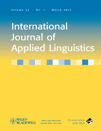
International Journal of Applied Linguistics
Elevating Multidisciplinary Dialogue in Language ResearchInternational Journal of Applied Linguistics, published by WILEY, is a premier platform for cutting-edge research in the field of applied linguistics. With a notable Impact Factor and ranked in the top Q1 quartile of linguistics and language, this journal serves as an essential resource for scholars, practitioners, and students. The journal’s wide-ranging scope includes various subfields such as language acquisition, language education, sociolinguistics, and discourse analysis, fostering multidisciplinary approaches to language studies. It has achieved a significant Scopus Rank, placing it in the 90th percentile for both Arts and Humanities as well as Social Sciences categories, reflecting its high visibility and influence in the academic community. The International Journal of Applied Linguistics is committed to advancing the understanding of language use in real-world contexts through rigorously peer-reviewed articles that contribute to both theory and practical applications. While it is not an open-access journal, it remains a highly respected publication for researchers looking to disseminate and acquire knowledge in applied linguistics.
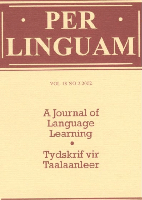
Per Linguam-A Journal of Language Learning
Connecting Theory and Practice in Language LearningPer Linguam - A Journal of Language Learning, published by the University of Stellenbosch's Department Didaktiek, is a distinguished open-access journal that has been a vital resource for language educators and researchers since 1985. With an ISSN of 0259-2312 and an E-ISSN of 2224-0012, it fosters scholarly dialogue surrounding language acquisition and pedagogy. Positioned in the Q4 category in Developmental and Educational Psychology and Education, and Q3 in Linguistics and Language for 2023, this journal addresses crucial aspects of language learning that impact both teaching practices and learner outcomes. Although its Scopus rankings reveal challenges, the journal remains committed to its objectives of advancing knowledge and innovation in language education. Operating from Matieland, South Africa, Per Linguam invites contributions that explore the intersections of theory, research, and practical application, offering a platform for educators, students, and policymakers to share insights and strategies that can transform language learning experiences globally.
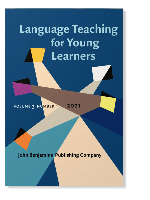
Language Teaching for Young Learners
Cultivating a passion for languages from an early age.Language Teaching for Young Learners, published by John Benjamins Publishing Co, is a premier journal dedicated to enhancing the pedagogy of language acquisition in early childhood education. Since its inception in 2019, it has rapidly established itself within the research community, reflected by its high Scopus rankings—placing it in the 85th percentile for Language and Linguistics and the 84th percentile for Education. The journal aims to provide a platform for innovative research, practical insights, and theoretical discussions surrounding the teaching of languages to young learners, thus contributing significantly to the fields of Education and Linguistics. With an open access model currently unavailable, it caters to a diverse global audience, including researchers, educators, and policy-makers, keen on improving pedagogical practices. Located in the Netherlands, the journal's commitment to academic excellence is evident through its Q1 and Q2 rankings in Linguistics and Language and Education respectively, encouraging continual discourse in cultivating effective language education practices.